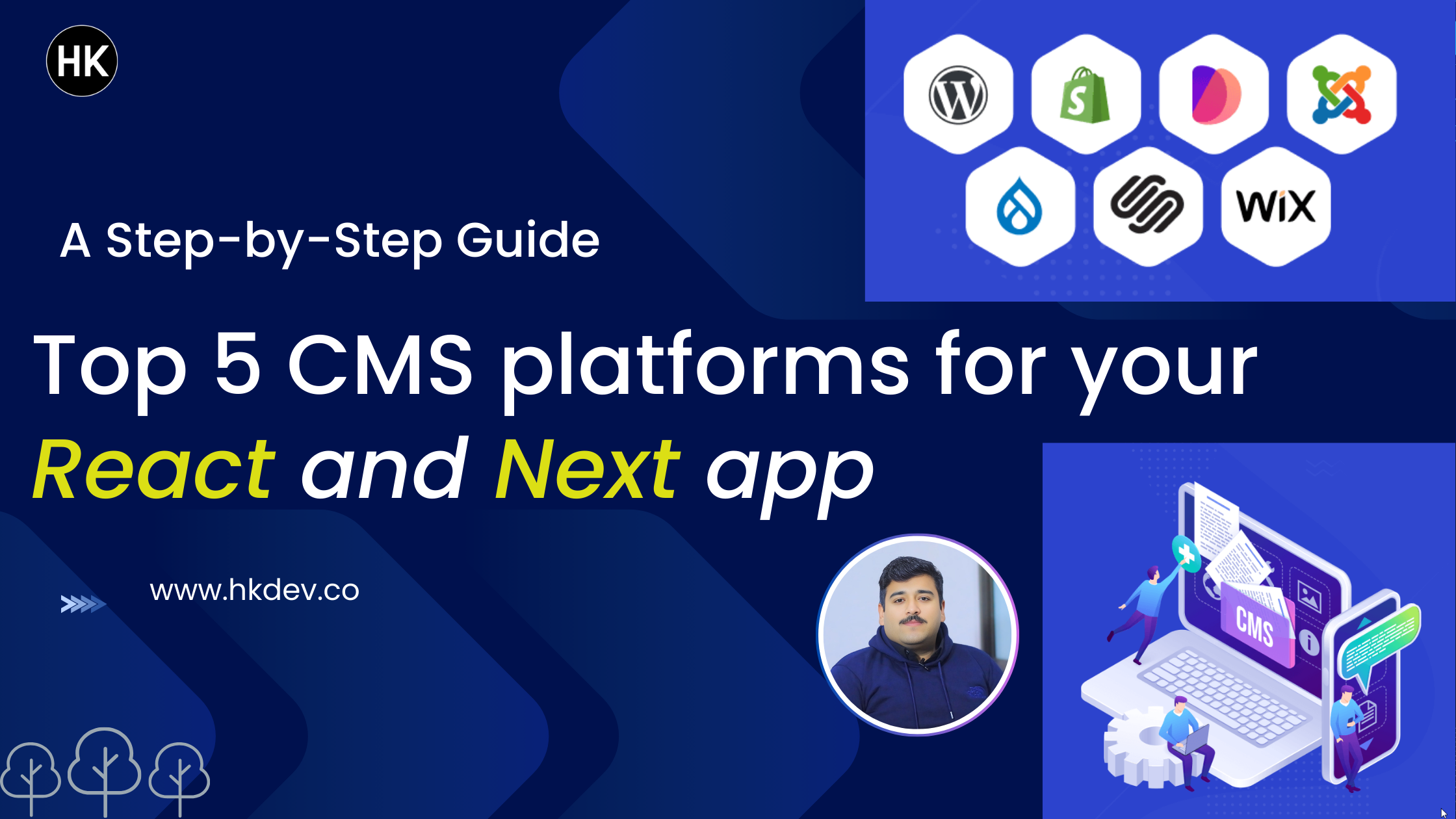Top 5 CMS Platforms in 2025: Which One Fits Your Business Needs For Next and React js

In 2025, the demand for dynamic, fast, and headless CMS (Content Management Systems) will grow as businesses seek efficient ways to manage content for modern front-end frameworks like Next.js and React.js. Initially built for monolithic architectures, traditional CMS platforms are now replaced with headless and API-first CMS solutions, providing developers with greater flexibility and performance.
This article explores the top 5 CMS platforms 2025 that best integrate with Next.js and React.js, ensuring a seamless and scalable content experience
1. Strapi – Open-Source & Developer-Friendly
Why Choose Strapi?
Strapi is one of the most popular open-source headless CMSs. It provides a flexible API and a customizable admin panel. Built with Node.js, it allows for deep integration with Next.js and React.js.
Key Features:
- GraphQL & REST API support
- Fully customizable with plugins
- Self-hosted or cloud-hosted (Strapi Cloud)
- Role-based access control (RBAC)
- Supports Markdown & WYSIWYG editors
Best For:
- Developers who need complete control over content architecture
- Businesses looking for an open-source, self-hosted CMS
- Custom projects that require a tailored content management approach
Drawbacks:
- Requires manual server setup and maintenance
- The self-hosted version lacks auto-scaling
2. Sanity – Real-Time & API-First CMS
Why Choose Sanity?
Sanity is a real-time headless CMS that provides structured content and an intuitive interface for developers and content creators. It works seamlessly with Next.js and React.js via Sanity Studio and a flexible GROQ query language.
Key Features:
- Real-time collaboration for teams
- GROQ-powered APIs with GraphQL support
- Highly customizable content models
- Portable Text Editor for rich content
- Strong integration with Next.js
Best For:
- Teams that need real-time content collaboration
- Enterprises requiring structured content with custom workflows
- Developers who prefer API-driven content delivery
Drawbacks:
- Slight learning curve for GROQ
- More expensive than some competitors
3. Contentful – Enterprise-Grade & Scalable
Why Choose Contentful?
Contentful is an enterprise-focused headless CMS designed for scalability and fast content delivery via API. It integrates well with Next.js via SDKs, providing a robust content management workflow.
Key Features:
- GraphQL & REST API
- Multi-environment content staging
- Cloud-native with global CDN
- Powerful role-based access control (RBAC)
- Strong integration with modern front-end frameworks
Best For:
- Large enterprises with complex content needs
- Scalable projects requiring global content distribution
- Teams looking for a fully managed, high-availability CMS
Drawbacks:
- Expensive for startups and small businesses
- Limited customization compared to open-source CMSs
4. Ghost – Best for Publishing & Blogging
Why Choose Ghost?
Ghost is a lightweight CMS focused on blogging and content publishing. It provides a fast API, allowing easy integration with Next.js and React.js for a dynamic front-end experience.
Key Features:
- REST & GraphQL API support
- SEO-optimized & fast performance
- Subscription-based content monetization
- Simple UI for non-technical users
- Built-in email newsletter functionality
Best For:
- Content creators, bloggers, and publishers
- News websites and online magazines
- Teams looking for an easy-to-use CMS with built-in monetization
Drawbacks:
- Limited customization for complex web apps
- No native multi-language support
5. Payload CMS – TypeScript-Based & Self-Hosted
Why Choose Payload CMS?
Payload CMS is a self-hosted, headless CMS built with TypeScript and optimized for Next.js and React.js developers. It offers a modern, flexible architecture and deep integration with MongoDB.
Key Features:
- Built with TypeScript
- GraphQL & REST API
- Self-hosted & fully customizable
- Authentication & user management
- Supports MongoDB as a database
Best For:
- Developers seeking a TypeScript-first CMS
- Projects that require full control over infrastructure
- Teams building custom applications with complex user authentication
Drawbacks:
- Requires manual hosting and maintenance
- No built-in cloud option (compared to SaaS CMSs)
Conclusion:
Choosing the right CMS for your Next.js or React.js project depends on your business needs, budget, and developer expertise:
- For full control & open-source flexibility → Strapi or Payload CMS
- For enterprise & large-scale projects → Contentful
- For real-time collaboration & structured content → Sanity
- For blogging & monetization → Ghost
Each CMS platform offers headless architecture, ensuring fast and scalable content delivery for modern React-based front-end applications. Contact me for a free consultation.